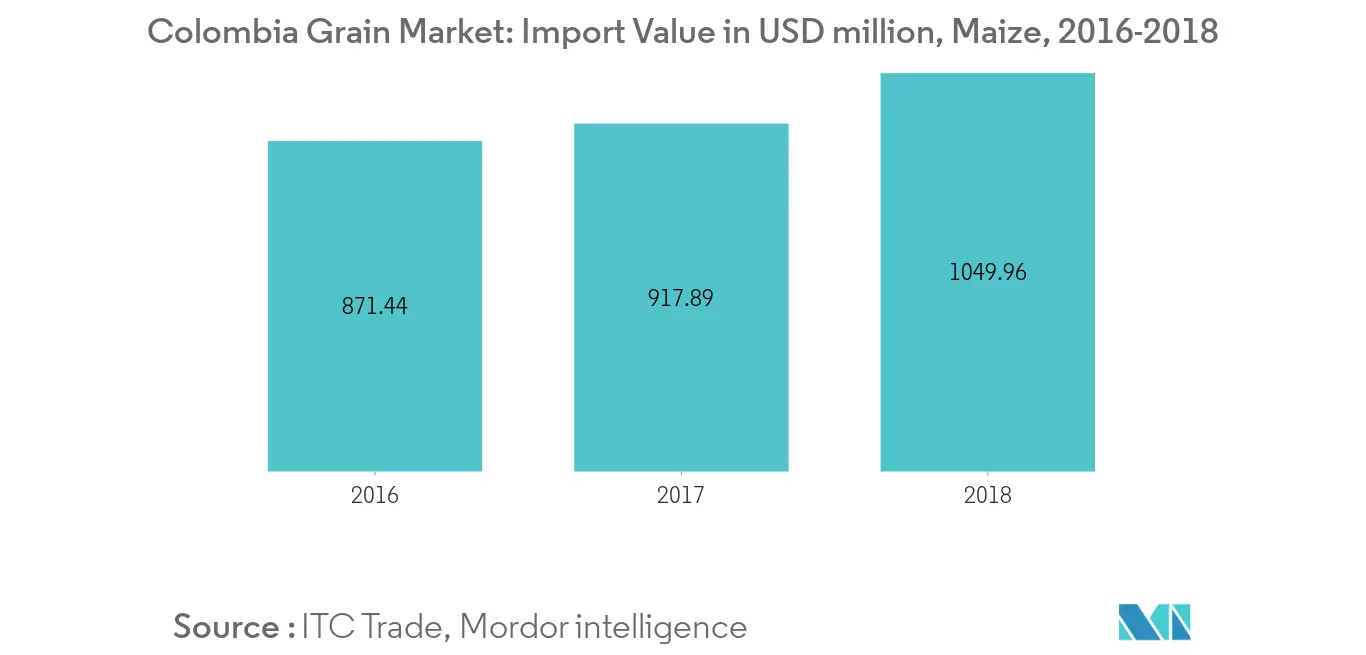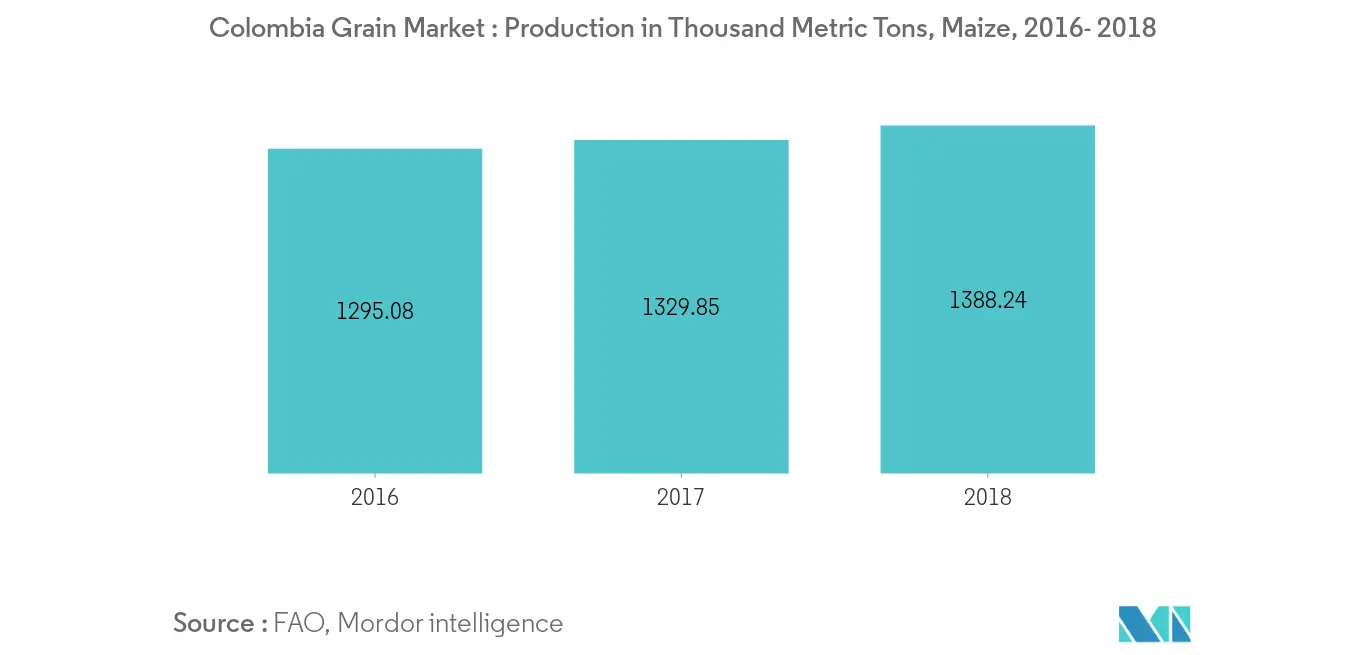Market Trends of Colombia Grains Industry
This section covers the major market trends shaping the Colombia Grain Market according to our research experts:
Increase in the Imports of Grains
Colombia is a net importer of corn, as domestic production can satisfy only about 30% of the total domestic consumption and represented about 51% of the total agricultural volume of grain imports, according to the ITC Trade, in 2016, the value of USD 871.4 million of maize was imported that has increased to USD 1049.96 million in 2018. Additionally, in 2018 the country imported wheat and rice amounting to 1,722 thousand metric tons and 164.8 thousand metric tons with an import value of USD 431.65 million and 79.31 million respectively. The United States is the main supplier of corn with a value of USD 994.85 million in 2019 with a share of 94.8% of total maize imports from the country. It is followed by Argentina and Brazil with a minor share of 3.1% and 1.5% respectively in 2018.

Demand from Animal Feed Industry Drives Production
The upward trend in the grain market is driven by growing demand from the animal feed industry that has been steadily increasing in the past years. 95% of corn imports are destined for animal feed with the remaining 5% for human consumption. The demand for animal feed will continue to grow, primarily in the poultry sector, as Colombia's economy remains strong and dietary shifts adjust to populations moving out of poverty into the low and middle-income classes. According to the Organisation for Economic Co-operation and Development(OECD), poultry meat is the most consumed meat type, in 2016 per capita consumption was 28.3 Kg that has increased to 31.1 kg in 2019. In order to meet the consumption requirement, livestock production is also growing. The demand for meat will continue to rise as sustained economic growth and the increase in household incomes boost animal protein consumption and the demand for feed as well. This will, in turn, drive the market for grains in the country.


